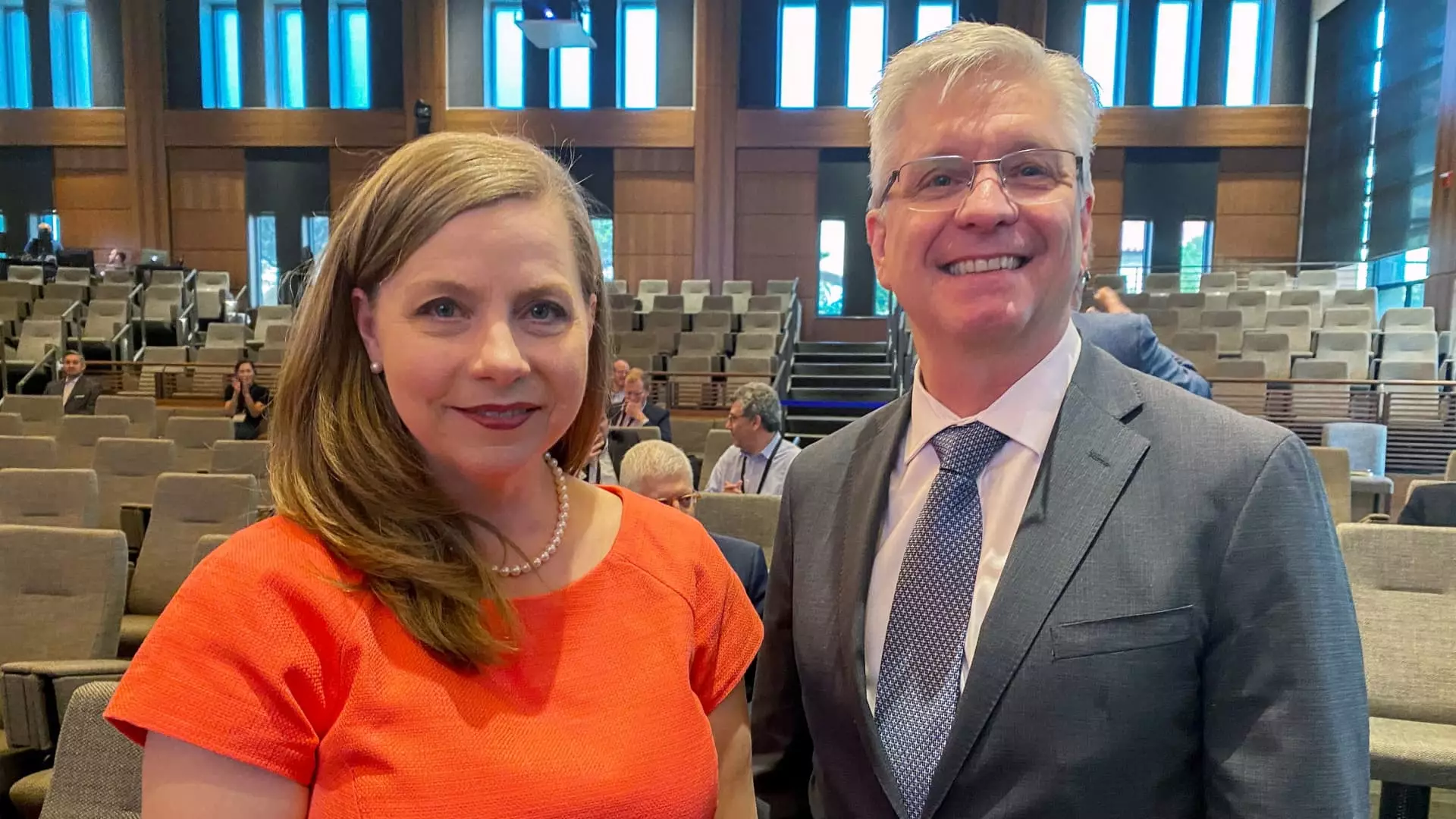The recent announcement regarding the departure of Michael Barr as the Federal Reserve’s Vice Chair for Supervision marks a pivotal moment in the landscape of U.S. banking regulation. With Barr’s exit coinciding with a wave of industry-friendly reforms anticipated under the incoming Trump administration, it emphasizes a notable shift in regulatory dynamics that could have significant implications for financial institutions and their operations.
The Context of Change: Barr’s Departure
Michael Barr’s decision to step down from his position, originally scheduled to continue for a longer term, stems from the looming threat of a legal struggle with the Trump administration. This strategic withdrawal underscores a recognition of the current political climate and the potential challenges that could interfere with his advocacy for stringent regulatory oversight. Barr’s tenure has been characterized by efforts to enhance capital requirements for banks through measures like the Basel III Endgame, which aimed to fortify financial stability. However, this initiative led to friction with industry players who perceived such regulations as overly burdensome.
This timely resignation creates an opportunity for appointing a successor whose values align more closely with the deregulatory ambitions of the Trump administration, thus positioning U.S. banks favorably amid a backdrop of post-election optimism that spurred growth in financial markets.
The Implications of a Deregulatory Agenda
The speculation surrounding Barr’s exit points toward a rejuvenated deregulatory agenda that could favor U.S. financial institutions. Historically, banks have been significant beneficiaries of administrative shifts that prioritize lighter regulatory oversight. The anticipation of a friendlier regulatory environment has already sparked a surge in bank stocks following Barr’s announcement, with upticks in prominent financial indices signaling investor confidence in a more accessible banking landscape.
Key actions anticipated under this regime include an expedited review of merger approvals, modification of opaque stress-testing procedures promulgated by the Federal Reserve, and adjustments to the methodologies employed in bank examinations. Such reforms have been long sought after by banking executives who argue that stringent regulations stifle growth and hinder competitive viability.
As the Federal Reserve seeks a new Vice Chair for Supervision, names like Michelle Bowman and Christopher Waller emerge as frontrunners. Bowman’s vocal critique of Barr’s Basel III proposals positions her as a potential architect of a redefined regulatory framework more sympathetic to the banking sector. Her tenure as a community banker and Kansas bank commissioner gives her unique insight into the complexities faced by smaller institutions as they navigate an ever-evolving regulatory landscape.
Analysts suggest that Bowman may champion reforms that enhance clarity and efficiency within the regulatory process, potentially streamlining evaluation procedures and alleviating the burdens of compliance. By prioritizing industry concerns while still addressing systemic risks, Bowman could usher in a new regulatory balance that resonates with both regulatory bodies and banking executives alike.
Market Reactivity and Future Expectations
The immediate market reaction following Barr’s resignation has been telling. Major banking institutions, including Citigroup and Morgan Stanley, experienced notable stock price hikes, reinforcing the belief that a shift toward leniency in financial regulation could enhance profitability. Expectations of reduced capital requirements may allow banks to allocate more resources toward share buybacks and growth initiatives, positioning them advantageously in an expanding economy.
Stifel analyst Brian Gardner indicated that the potential rewriting of the Basel III Endgame proposal could signal a turning point in capital requirements and overall regulatory expectations. If Bowman’s influence leads the revisions, the result may well align more closely with the interests of the banking industry as opposed to the stringent measures initially put forth by Barr.
While the anticipated deregulatory approach may provide immediate operational advantages to banks, it raises important questions about long-term financial stability. The banking sector’s resilience is critical; therefore, striking a balance between fostering economic growth and ensuring robust regulatory frameworks is vital. Easing capital requirements could embolden lenders, but the risk of financial vulnerabilities may increase if safeguards are deemed insufficient.
The forthcoming changes at the Federal Reserve reflect broader shifts in economic policy following the Trump administration’s return to power. With the stage set for a more accommodating regulatory environment under potential new leadership, U.S. banks stand at a crossroads, navigating the complexities of heightened operational freedom against the backdrop of sustained financial stability concerns. The evolving narrative of financial regulation will undoubtedly shape the trajectory of the banking sector for years to come, making it imperative for stakeholders to adapt in response to ongoing developments.

Leave a Reply